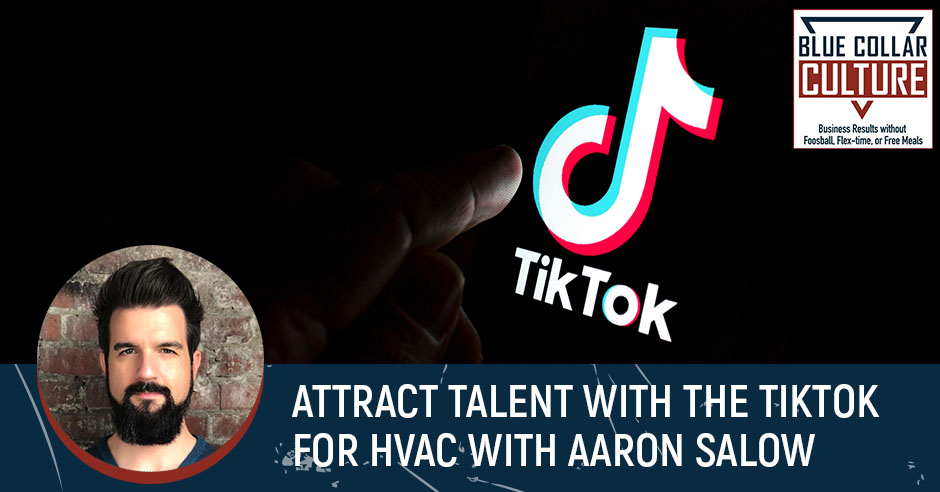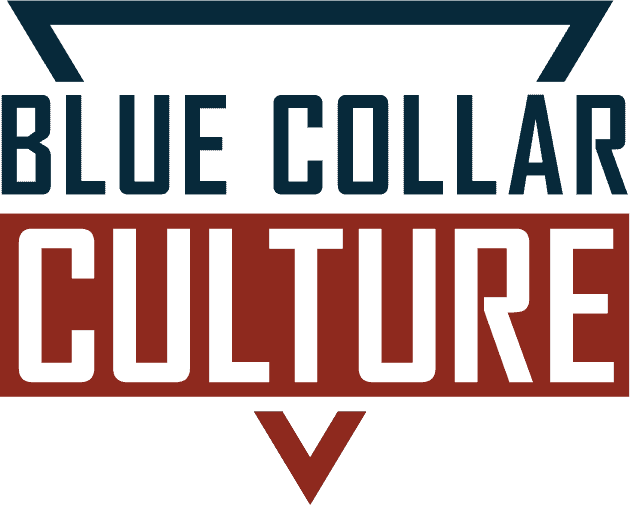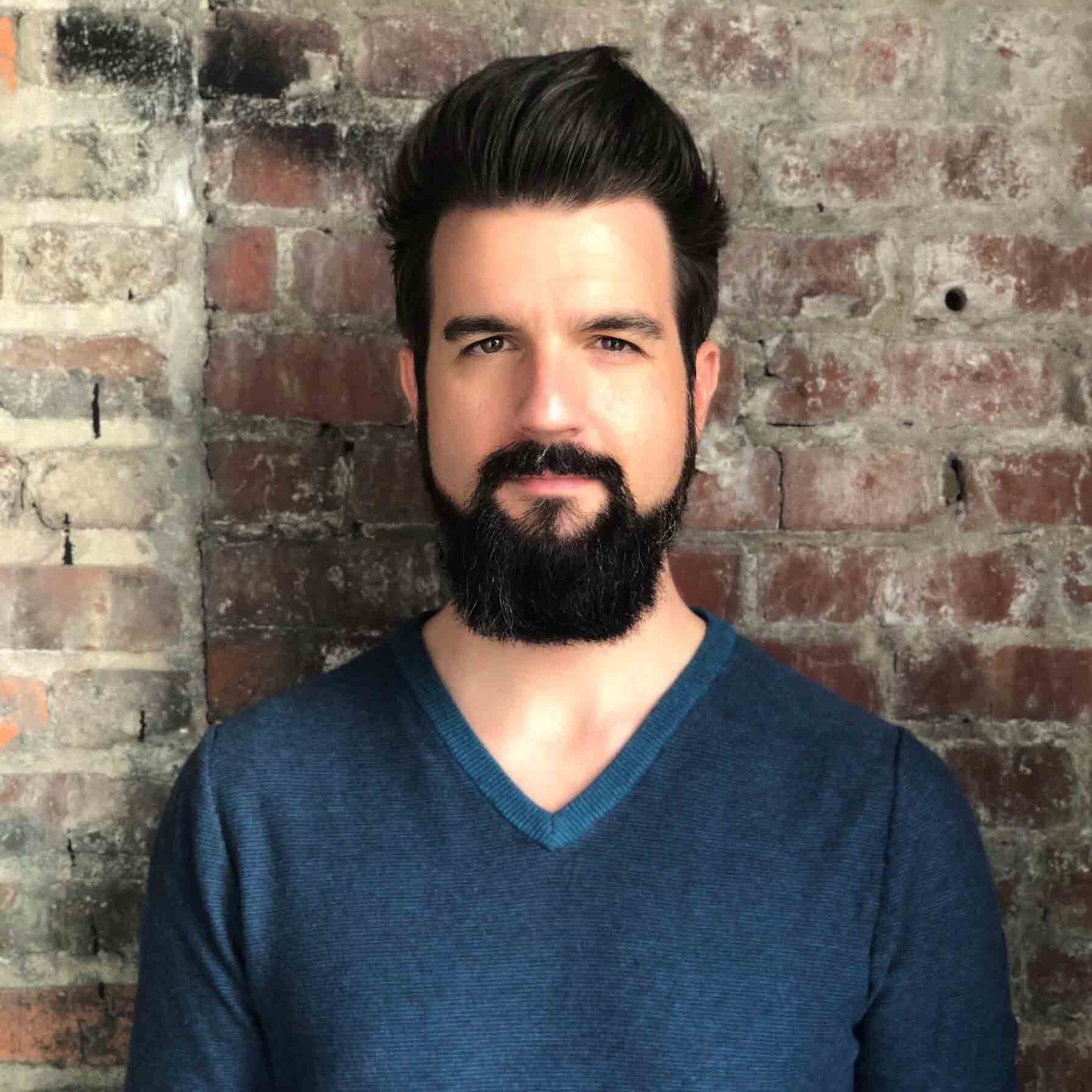
Finding and attracting good people in the trades is a challenge right now. New technology is emerging, and today’s guest has figured out how to use it to solve this problem. Aaron Salow is the Founder/CEO of XOi Technologies, which helps contractors overcome the skilled trades gap using tech and data. He joins Ryan Englin to explain the gap and how their tool enables you to solve the problem. Aaron talks about the importance of incorporating tech in trades and the value of hiring and training younger technicians to make sure your business endures the changing times. Stay tuned!
—
Attract Talent With The TikTok For HVAC With Aaron Salow
It’s no secret that finding good people in the trades is a challenge. Our guest has some amazing technology to help us solve that. I am here with the Founder of XOi Technologies. If you have not heard of XOi and you are in the mechanical HVAC space, skilled trades, and electrical plumbing, these are the people that are revolutionizing the way they do business. You need to learn about XOi. You are going to learn about them in this episode.
They started with a single goal in mind, to help contractors overcome the skilled trades gap. It’s no secret that we’ve got this. Something I am incredibly passionate about is not only helping contractors hire better people faster but if we don’t start bringing in the younger generation, we are never going to be able to solve this problem. XOi Technologies is the TikTok for the trades. I want to welcome my guest, Aaron Salow, to the show.
—
Aaron, welcome to the show.
Thank you for having me, Ryan. I’m excited.
Me, too. Let’s jump right in. What is the biggest myth that you want to shatter for our readers about your industry?
It’s that you should be afraid of your technicians when it comes to technology. That’s the biggest myth I want to shatter on this show.
You need to unpack that one for me. Go a little deeper on that.
The nature of the skilled trades gap has a lot of owners and operators concerned about driving new solutions into the workforce and walking on eggshells around their technician workforce because if we are pushing too hard, they will go to a competitor. They are willing to lead for $1 more an hour. What they are missing is most of the solutions in the past decades have been put on technicians. There are great solutions out there that are built for technicians that also impact your top and bottom line. There’s a way to solve both problems. That is where operators can focus to make a difference and kill that myth.
We are talking technology and retention. We are talking about people and growing them, investing in them, and engaging them. We have a lot to talk about.
I’m excited.
Tell me a little bit about that. You founded a company called XOi. You help with breaking this myth by doing what you do. Give me a quick, little 30-second version of that.
We launched XOi with an exclusive goal of solving the skilled trades gap. We did it with smart glasses. I will give you a 30-second version, which is we deployed thousands of smart glasses into field service, predominantly HVAC. We were all over ACHR News and had a big article. It was exciting. We were way too cute and far ahead of what technicians needed.
We learned a big lesson. Giving a technician a few $1,000 pairs of smart glasses and saying, “Keep it charged. Don’t break it. Treat it better than the rest of your tools.” It was a lesson for us to say the least. I can tell you the different podcasts about the $100,000 blue machine. We had to fix these things because they were getting thrown around. We learned a super important lesson, which is that the curb-to-curb space is super underserved.
We give them bite-sized chunks of relevant information in the moment they need it, because that’s how these kids are used to consuming content in their world today. Click To TweetThis time when we are trying to equip these technicians with smart glasses, “We can see what you see and hear what you hear. We can help you solve problems.” It was clear that the office was missing sales quote information and safety information. The customer was inherently mysterious about what was happening in that curb-to-curb space. As we pivoted to smartphones and tablets, since we are a little ahead of the curve, we are able to do a whole lot more with the technology.
When we talk about serving the tech, we have always had this ethos that says, “If you can drive value for the technician on a job by job basis and create continuous use cases versus episodic, then you can win in your business.” That’s where that myth of being careful comes from because the technology solutions we put on text for the last few decades have been put on them, “We are going to control your cell phone, track your GPS, make you fill out an FSM.” Everything is about putting things on them to control their day versus, “What am I giving you to make your day better? How am I winning as an owner-operator as a result?” That’s possible if you focus on that half a time.
A lot of great things are in there. I can tell you are passionate about what you do a little bit.
It’s easy when it’s genuine, for sure.
You have been doing this for a while. You talk to a lot of owners. I’m sure you have come up with resistance against them. That’s why this myth exists. What is it that holds these owners back from being able to say, “You are right, I need to empower my people. I need to give them something to make their lives easier. I will benefit maybe not as quickly or as directly?” What’s holding them back? What’s keeping them thinking the old way?
The nature of the growing skilled trades gap has people nervous about their technician bases and saying, “If we put too much on them, they will find another job and go somewhere else.” We will see if they like it. We will see if it makes sense. As anyone who’s successfully deployed technology knows change management is super hard, there’s no question, especially for men and women that were hired to work with their hands. They look at technology as an extra thing that they have to do. The reality is that the technology that’s existed in large part has been extra work.
When you drill into the actual things that a technician has to do on-site and the things that are a pain in the butt for them in terms of communication to the office, the customer, the things they have to search and wait on hold for, all the things, they start to go, “Is there opportunities to make their lives better?” In pursuit of that, collect better information and understand the assets that we work on more effectively. Try not to piss off the office as much as we do by not giving a massive information or getting information from the field.
You start to understand that in this underserved part of the time, you can accomplish all of those goals, create a great customer experience, make the technician’s life easier, and connect better info back to the office. It’s all because it’s wrapped around the asset. The asset is the core of what we do in the field service. It is the thing that we are servicing, installing, brake fixing, selling, etc. Those are the things that we try to wrap this all around.
I think a lot about what I do in helping these guys hire these texts, find these texts, and everything else. One of the first things we talk about is if you don’t care about their day and what’s going on in their world, they are not going to care about doing a great job for you or taking care of the customer. Everything you said is about, “We want to help these guys. We want to empower them. We are going to make their lives easier.”
Also, meeting them with the technology they are used to. It’s connecting to their attention spans. The younger generation is a TikTok generation, “Give me 15 to 20 seconds at a time and I’m on to the next thing.” If you are providing them a solution that is long in the tooth in terms of technology and it’s different from everything that uses a consumer, it’s not going to connect with them in a meaningful way.
One of the things we do at XOi is microlearning content on workflows. Step 1, 20-second video. Step two, wiring diagram. We give them bite-sized chunks of relevant information at the moment they need it because that’s how these kids are used to consuming content in their world now. If I fired them off a 30-minute YouTube video and say, “It’s at minute fourteen somewhere.” They are going, “Sure. I will wait on hold with a buddy for a while or I will post it in a Facebook group and a lot of strangers will help me,” which is common as well.

Interestingly, you say that. You mentioned that the modern workforce and the younger generation are used to consuming content in those bite-sized chunks. How do we get the older generation, those guys that still got 10 or 15 years left of their career that is in here? How does XOi help them adapt?
When we train technicians, we learn about different ways to frame our technology in a way that benefits them and also the office and the customer. The interesting thing is about taking content on every job site. This is something that customers are used to in everything they do. A few years ago, I’ve got my truck oil changed and this dude came up with a video of the underside of my truck. Immediately, I’m like, “Genius.” What I used to have is a dude covered in tattoos, burning a heater going, “You need $17,000 of work done.” He goes, “Sure thing.” “Is the oil changed?” That can be done.
It’s different when you see a video of your rear diff leaking and you realize it’s a real problem. That’s the same transparency that we are giving to folks. In a technician’s world and a seasoned technician’s world, that looks a little bit more like, “Cover your butt.” Seasoned technicians have gotten burned more than anybody on he said and she said games with the customer. From a marketing perspective, we are not going to put on our website, “Cover your butt and show the customer the wrong.” That’s not the intent.
When you are talking to tech and they’ve got six stories that have happened in the last year, “You left screws in the ground. My wife ran over them and wrecked her SUV. She’s got a hole in her tire now. Are you guys going to pay for this?” The guy is like, “I didn’t leave screws on the ground. I didn’t leave the panel up.” The ability to be able to meet the tech to say, “You do great work.” Shoot a 30-second video and show that it was done right. Give it to the customer. Be proactive so they never make that call in the first place.
It’s about positioning. The contractor gets to give the customer a new deliverable. The technician gets to validate the work and not have those he said and she said moments. We are using data science to learn from those videos to give it back to the company and say, “That compressor tends to break a lot and that Model Family X. You may want to consider buying different compressors.” There’s a virtuous data cycle in this if you do it right but it is about engaging the technician on the job every time.
You reminded me of the way your system works. You were focused on the asset and having all the information about that asset. You told me one time that someone could scan a serial number or something and know the service history of that unit, what worked, and what didn’t work. Not just that but across everybody that’s in your network. You will know that compressor is an issue.
For companies that choose to be part of that network, we are certainly not sharing companies’ information broadly unless they choose. I will give you an example. We work with a large peer group that has 40-plus contractors in it. Those 30-plus of them are customers of ours. They have opted into knowledge sharing across North America because they want to understand that information and benchmark against it.
That’s a company’s choice to do that. When they do, it’s powerful. We certainly don’t want to give the impression that we are sharing anyone’s information, we aren’t. We can help you empower your own information. If you are part of a peer group or an association, we certainly can make that much more powerful.
I didn’t mean to imply that you were violating any privacy things. It’s the fact that’s available. It’s an option to learn about this stuff. As the owner, I’m sitting here thinking, “I’m engaging my guys.” I love the older generation, which is the generation I fit into like the CYA moment. I’m going to cover myself and say, “I’ve got the recording of it. Here’s what it looked like before I left.” You are there, three days later, it doesn’t look the way I left it. I love that idea.
You are also empowering these guys because you’ve got the training right there. They are able to pull up the information about the asset. They are not having to call the home office and wait. That kills me as a consumer. I’m like, “What do you mean sitting outside on the curb?” They are like, “I’m waiting for the office to get back to me because I don’t have this or I don’t have that.” I’m like, “What?”
“Am I paying for this?”
It’s expanding upon that core ethos of trust, transparency, reputation, and the knowledge people have that makes any field service business great. Click To TweetYour product is cool and what you have done. It hits so many different angles of the business in the mechanical space. I used to do a lot of digital marketing for guys in the HVAC space. The thing that consumers always run into is they can’t see it. They can’t see the problem, air handlers in the attic or units up on the roof. They don’t understand it. It’s a box. It turns on. It makes noise and it makes me feel good inside. It helps with warming up the house or whatever. You are solving that problem with these videos.
I worked with a client. I didn’t even know this. We have a mutual client. He sent me all these videos. I’ve got 11,000 videos of all these jobs we have been on and he shows me something, I’m like, “This is cool.” You share this stuff with your customers. I love that it’s about engaging with your people and giving them the tools to make their lives easier. I bet customers love this stuff, too.
The customers have that visibility throughout other parts of their life. You sit and make the joke. You get more visibility on a Domino’s pizza order than you do your $5,000 service call at your house. We are trying to provide that level. Plus, it’s trust-building. I have been fortunate to talk to hundreds and hundreds of owners. I have asked them a simple question, “What’s made you successful?” You talk to these generational businesses that have grown for decades and decades. It all boils down to two answers, trust, transparency, and reputation. Number two is their people and the knowledge that their people have.
If you look at everything we have talked about so far, it’s expanding upon that core ethos that makes any field service business great. I have talked enough to say confidently that there is not a field service business out there that doesn’t value those two things significantly that has made it and done well. If you don’t care about your reputation and you don’t care about the knowledge of your people, that’s the core of who you are.
This is about sharing more, being more transparent, taking that to another level, and giving your people more tools to be more successful on-site for the customer. When you look at it that way, talk about data science, AI, and all these buzzwords that people want to put index for investors, it boils down to something meaningful. It’s about building on those things that have made service businesses successful for the past couple of years.
Let me ask you this question, why do you think people don’t need that? I’m listening to you talk and I’m like, “This is a no-brainer.” I would be buying it if I needed it for my business. What’s holding people back? A lot of times, as owners, one of the biggest struggles is getting out of our own way. I see a huge advantage here not only being able to better serve the customer and make life easier for the office but make life a lot easier for the tech. Why do people not do this? What’s holding them back?
We had a 100% close rate for years. I don’t know what you are talking about. Change management is a big one. We used to make a mistake as a business where we thought we were being clever, we are like, “When you put your field service management solution, name the player out there that does it. There are a lot of mature markets.” Who is involved? That was our way of mapping the account. What we realized we were doing is we were bringing up the pain to the contractor because they were like, “They’ve got to hire an IT person that had to do this and do this.” It took 6, 8, 9, and 12 months.
A lot of times, change management is hard. The reality of being able to put this in again back to the technician, back to being careful, we want to make sure this isn’t painful. We deploy people. We deployed 150 techs all the way to 5,000 techs. We can do that in a matter of weeks and on the bigger side, a few months. We have made this simple.
Part of the things we have learned as a business is to make sure our customers understand how simple this is to deploy, how little we are asking for the tech, and how much we are giving the customer and the office in exchange for that value. Where we get pushback is change management and the status quo. We have already invested in this other FSM thing and we will do this thing. The reality and what they are finding out is that those systems are being left in the van.
The core of what they are doing the whole time is chicken scratch, making metal cereal, parts information. Go back to the van and type out the thing my boss is making me type out so I can get paid. The reality is the heart of our whole business and the data that exists there is being ignored. That’s a critical piece and that’s where we see pushback.
One thing that’s worth mentioning is assets. When we talk about owning this file model, the EPA is putting new restrictions on folks every two years. On January 1st, 2023, they are doing a major swap out in terms of SEER ratings. A bunch of parts is changing across every OEM. Not only do we have a skilled trades gap but we have the actual equipment changing as well.

The reality is that contractors can control their own destiny by understanding that equipment when it fails, what type of skillsets are needed to fix it, how it’s failing depending on environmental parallels, and things like that. Those are things that distributors and OEMs don’t have. They don’t have that information. They sell it to distributors, sell it to a contractor, and put it in a homeowner’s house. They have sales information and warranty information and that’s it.
When you are talking, as a contractor, “How do I control my destiny moving forward?” I’ve got a skilled trades gap. I’m changing equipment. It’s my ability to document that equipment consistently. I met my asset universe, the skill around those assets. That is massive bargaining chips for buying, warranty support, for parts, to bring in new talent into my business, so I don’t get disintermediated by the big players that are out there and the big roll-ups that are happening. This is the secret sauce for the next decade. If you own that piece and you own it by democratizing the data in it for your company, you will sustain yourself for the next decade. There’s no question in my mind.
My brain is running on all the implications, marketing, sales, and everything else with this. My passion is the people. I’m going to focus on them for a second. I love what you said about the younger workforce, especially the new techs. By the way, if you are in the trades and you don’t start bringing in young techs, the guys that have been doing it for 20, 30 years, their backs aren’t going to last much longer. We’ve got to start bringing in the younger guys. They were raised in technology. That’s what they know.
The guys that are entering the workforce now or even the guys that have been there for a decade never saw a telephone with a cord outside of a TV show. They can’t believe that you had to stand in one place to be on the phone. When you had to leave for an appointment, you had to hang up the phone and wait to start your conversation again. The simplest, little things that we take for granted, now this younger generation is clueless. They grew up with devices. They are in their hands. Asking them to do something on their device is like second nature. It’s like breathing to them.
Gamification is a big thing that’s coming out now. I’m seeing this happen in the construction world. They are gamifying the use of cranes now because they have to turn it into something that these kids are used to. They can’t rely on, “That’s the way we have always done it so that’s the way we are always going to do it.”
The younger generation doesn’t know by the nature of how profit margins are shifting, and how OEMs and distributors are changing behavior. Roll-ups and consolidation are happening. A lot of companies don’t have the benefit of the mentor model, the ghost model that they used to have for quite some time where they can be like, “Young apprentice, sit with another guy for the next three years.” They have to get these folks up and running.
Being able to invest in tools that allow them to be self-serve and diagnostic, one of the most important things that have become a trend out there that people should be wary of as well is offshoring if you will, your knowledge set. When something is free, you are the product. When folks are providing free services, free knowledge, free expertise through live video, call centers, whatever the case may be, you are offshoring that skillset, which is 1 of those 2 core ethos that we talked about.
Unless you believe in a world in which we are going to have all Uber-style technicians, whether they are all Uber-fied, go out and get sent and you don’t know who showed up to your house or commercial site. That would be a whole other episode probably to talk through why that’s problematic from a relationship and trust perspective. The ability for you to protect that knowledge and expertise is important inside an organization.
Back to what they were able to do several years ago, your ability to give that young technician, “This is an emphatic, empirical data set that you can use to figure out history, diagnostics, and support.” With this piece of equipment, it’s going to be critical. You are going to hire younger talent. You can be able to get them more effective quickly. It’s going to be a critical part.
There’s change management. Nobody likes change. It’s going to be a little difficult to get this going. Months from now, your team is used to it. Now they are thinking, “This guy down the street is offering a dollar more an hour.” They call him up and they are like, “What are you doing to make my life easier?” It’s like, “I’m paying you a dollar more an hour.” It’s paper. You are going to do it the old-fashioned way. You are going to wait on hold. You are going to sit at the job site much longer. These commission texts are like, “Are you nuts? I’ve got to move quickly.” Once they are acclimated to it, once the software is in place and they are used to this, it’s a huge retention tool.
We have been fortunate to work with some of the larger educational institutions across the country. They believed in partnering with us that the ability to give technicians this tool in their training is going to be something that allows them to be more effective once they go out in the world. They will either start their own business or work for someone that’s out there by having these tools readily available. All this knowledge now is locked in men’s and women’s heads across the country that is aging. It’s between their ears.
When something is free, you are the product. Click To TweetThe reality is we, as an industry, have not done a good job of centralizing that information and making it available. There are companies out there that will centralize it for you and they will keep it. You can take an intentional step to keep it yourself, own it yourself, and create an asset for yourself. That’s what we hope to empower contractors to do.
That’s fantastic. Over at XOi, I still own all that information. Tell me a little bit more about XOi. I’m excited. I want to learn more. I’m sure some of our readers want to learn more, too. Tell me a little bit about what they’ve got to do to get started and how they get ahold of you. You’ve even got a free giveaway for those who are reading.
You can always go to XOi.io. For folks that are part of this Blue Collar show nation are able to get a free price analysis. Effectively, what that means is we are going to look at any process that’s happening between the curves. It’s anything from gathering asset information, sales process, safety process, and how you interact and interface with customers. We are going to say, “What are simple ways that we can use workflows to be able to impact dollar values there to sell and get more at-bats for your tax.
You mentioned condition tax. We have seen a 30% increase in the number of jobs that they quote because we make it super easy to take video content, tie it to the asset, and get it to the office seamlessly. They are getting higher close rates as a result. We do an analysis for you to see what that looks like. We will be the first to tell you, “This doesn’t make sense on paper or it does.”
We will look at the ROI with you and look for an opportunity to start with you to see if it makes sense over an opening period. That’s what we are offering. We are excited to do that with you. We can do that in a quick 30, 45-minute call. We work with mechanical, electrical, and plumbing contractors predominantly. There’s a lot of expertise. Hopefully, we can help you understand whether XOi is a good fit or not.
If you are reading this, make sure you look it up and get connected there. Aaron, this has been great. I learned a ton. My brain is churning. I’m sure some of our readers are feeling the same way. I can’t wait to learn more and check you out at XOI.io. Aaron, thanks for being on the show.
I appreciate it. Thanks, Ryan.
Important Links
About Aaron Salow
 When I walk through a manufacturing facility and smell the sweet mix of coolant, metal shavings, and oil, it takes me back to my childhood. The family factory was my playland, an escape in which you could build, experiment, and experience.
When I walk through a manufacturing facility and smell the sweet mix of coolant, metal shavings, and oil, it takes me back to my childhood. The family factory was my playland, an escape in which you could build, experiment, and experience.
As a 15-year-old, my father told me if I could run the (less than safe) screw machines as fast as the small handful of guys that worked for him, I could make $7/an hour too. It was a challenge. It was rewarding. It made me feel like a man. That work continued through high school, college, and almost every school “break” I had growing up.
As a professional, I continued to pursue work in manufacturing and construction. As an entrepreneur and an employee in these industries, I continued to grow my experience and admiration for the people that make this country run. Whether it was hub components for heavy truck, or a clean room for the Department of Defense, the fingerprints of hard work and resolve was evident everywhere I spent time.
My entire life has been marked by learning from and spending time with blue-collar men and women. When you think blue-collar, you probably think about a job…I think about the mindset. Blue collar people are loyal, work hard, and care about the most important things in life. They use their hands to make a difference and they are proud of what they create.
The problem is, there are less and less people that want to do this job. To put a number to it, there are over 7 million unfilled skilled trades positions today in the United States…this is no joke.
I started XOi to solve the biggest problem every company in blue-collar industries are facing today: a skilled trades gap. They are struggling to answer the question: “in the face of a growing skills gap, how do we grow?”
Our mission at XOi is to help companies answer this question, and we are humbled to do it every day with field service customers across the globe.

